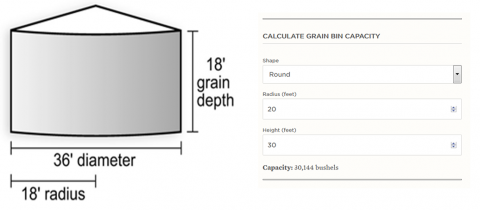How to Estimate Bushels in a Round Grain Bin
March 26, 2012
Several times a year, I get a phone call from someone wanting to know how to measure the bushels of grain in a round grain bin. There are two ways to calculate the number of bushels in a bin. The most basic method is to use the formulas we were taught in high school math class.
Cover Crop Forages: The Nitrate Dilemma
August 25, 2015
Planting cover crops such as brassicas and small grains during late summer or early fall is becoming a more common and accepted practice. These species have been used as high quality forage for many years and often will be grazed as a forage double crop


